Want a heads up when a new story drops? Subscribe here.
Promoting your company’s products or services online has never been easier. The number of people surfing the Internet daily is opening many doors for you to market your business. You get to do it on your website, via email, apps, etc., but using social media is probably the most effective and widespread method nowadays.
There are more than 4,6 billion people worldwide using social media daily and business owners are aware of that. That’s why they have an online presence on these platforms and actively communicate with their audiences – the goal is to capture the attention of both current and potential customers to achieve their marketing goals.
The most densely populated platforms by online businesses are Facebook and Instagram. Which platform is better to promote your business and why? How to choose the right one for your business? What are the best social media marketing practices in 2022? This article will answer these questions and some more so that you are more prepared to compete online.
Table of Contents
What is Social Media Marketing?

Social media marketing is exactly what it sounds like: using social media platforms to promote your business in order to fulfill your marketing goals. You might be interested in increasing your brand awareness, generating leads, increasing sales, or engaging your current customers. Whatever you are aiming at, social media is the right place to achieve it as you have access to a broader audience and to excellent tools for analyzing both your audience and your performance online.
When performing social media marketing, you should think of social media as a database filled with valuable information on the audience you wish to target. You get to know important details about the people you want to reach such as their age, gender, job occupation, hobbies, interests, and so on.
By having this knowledge, you can craft content that will engage your followers, make them respond to it, and thus move them down the sales funnel. If you skip the step of researching your audience, you are basically throwing away the time, effort, and money you invested into content creation. Your message is unlikely to reach your future customers and fulfill its purpose and this is the last thing you want for your social media marketing strategy.
Social Media Marketing VS Other Types of Marketing

Before exploring social media marketing any further, we should first differentiate it from other types of marketing. For example, do you know what is the difference between influencer marketing and social media marketing? Or between content marketing and SMM? You might feel overwhelmed with all these marketing terms, so in this part, we will discuss what makes social media marketing stand out from other types of marketing that it is usually confused with.
Content Marketing

The goal of any content marketing strategy is to generate and provide content. It’s used to attract new and potential customers or maintain the interest of the current clients. In order to achieve that, the content should be useful, informative, and entertaining. Furthermore, it should be directing social media users to the business’ website or another chosen destination to generate sales, increase brand awareness, and so on.
In that sense, content marketing on social media is not the opposite of social media marketing, but a part of it. And a very important one, indeed as social media is the perfect place to distribute valuable content so that it reaches as many leads as possible.
Influencer Marketing
 With the increased popularity of social media in recent years, influencer marketing became a serious trend that many businesses use to reach a broader audience.
With the increased popularity of social media in recent years, influencer marketing became a serious trend that many businesses use to reach a broader audience.
Influencer marketing means that a brand/organization collaborates with an influencer and uses their fame and audience to reach its marketing objectives. The collaboration can take many forms: sponsored content, gifting products or services, giveaways, account takeovers, and so on.
It is a very flexible type of relationship that benefits both parties: the brand gets more visibility and followers, while the influencer receives more trust for collaborating with well-known names.
Just like content marketing, influencer marketing is also a part of social media marketing that focuses on an intermediate to achieve the set goals.
Social Media Advertising

At first, you might think there is no difference between social media advertising and social media marketing, especially as these two terms are often used interchangeably. Yet they differ in one specific aspect: advertising on social media is paid, while marketing on social media is free.
For instance, you could be promoting your products/services on Facebook or Instagram by crafting content, sharing your blog posts, or upcoming events/sales (except for the content creation, the process is mainly free).
Yet if you decide to reach more people by boosting your posts or organizing a promotional campaign, you will have to pay for your content to reach that particular audience. Some companies prefer to delegate paid advertising on social media to experienced marketing agencies, which brings more experience and potential success to their campaigns but could end up more costly.
Tip: Hundreds of growing businesses use Socialfix to leverage successful social media marketing strategies and showcase their products and services. Try us for a free consultation
What Does Social Media Marketing Include?
To better understand what social media marketing is, you should get familiar with its main components or pillars. These essential elements are what make your SMM a complete and working tool for achieving your marketing goals. Think of them as steps you need to take in order to build it.
Marketing Strategy

The first one is a marketing strategy which is basically a framework of what you are planning to do on social media, what you are looking to achieve, and finally, what metrics you will set to measure your success.
In your strategy, you should define your goals and make them clear, specific, realistic, and most of all measurable. That’s why you have to set metrics as well for tracking if your marketing strategy is working as it should be.
On both Facebook and Instagram, you will find some amazing tools and insights into how your content is doing according to your goals. For instance, if you aim at increasing your sales, you should be tracking the number of people who clicked on your post or followed the link to your website.
The strategy should also include the type(s) of content you are able to produce and then share with your audience. This is going to determine which social media platform is a better fit for your goals. For example, Instagram is the preferred option for more visual content while on Facebook you will find a mixture of text, images, and videos.
Content Calendar

Another essential part of SMM is your content calendar. You don’t need to have all the monthly content prewritten, but you should definitely have a structured plan of what types of content you plan to share (posts, videos, giveaways, etc.), how often you want to post it, and preferably the outlines or topics for your content.
Without such a plan, you will end up with sporadically shared content which makes you look inconsistent and moreover: unable to track the performance of your content.
In terms of scheduling your content on social media, you can do it both on Facebook and Instagram, yet it requires a third-party tool to schedule on Instagram, whereas on Facebook you can do it directly on the platform using the available publishing tools.
Feedback Analysis
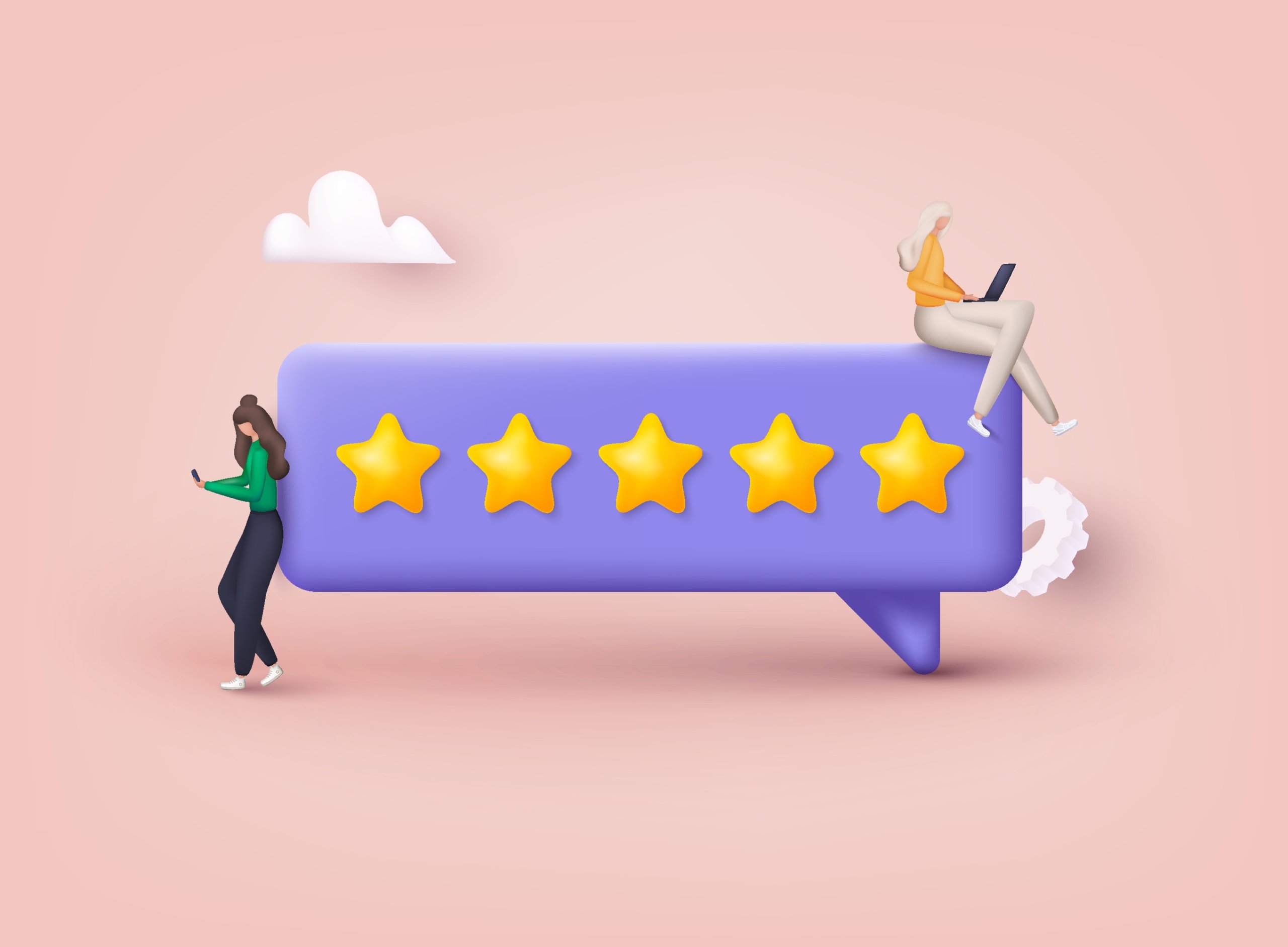
As you become active on either Facebook or Instagram, people will start talking about you in terms of the content you share, the quality of the products/services you offer, your customer service online, and so on. Researching this feedback is key to preserving your social media image and to performing better online.
You will probably come across mentions of your social media profile on different users’ posts, stories, comments, hashtags, and more. Use this information to understand how your brand is perceived and if possible use the occasion to communicate issues or answer questions. The more you learn about your image online, the better chances you have to improve it.
Performance Analysis

As mentioned above, you have to analyze the performance of your social media marketing actions regularly so that you can make adjustments if necessary.
As of July 2021, you are no longer able to use Facebook Analytics for that purpose, but at your disposal is Meta Business Suite for managing both your Facebook and Instagram accounts in terms of audience insights and content. You can also take advantage of the benefits of Facebook Audience Insights and Instagram Account Insights for more specifics and details.
By gathering information through the likes, shares, reactions, and overall engagement of your audience, you will have a better idea of how they are responding to your marketing plan and if you have to change it or simply produce more of what is working well.
Advertising

When it comes to marketing on social media, you have two options: do it organically or do it by paid advertising. In the first case, you count mainly on your content – it should be both informative and engaging to grasp the attention of your audience. The downside is that even the best content is not a guarantee that it will reach your potential buyers.
That’s why most businesses invest in paid advertising on social media where they can target the users that are most likely to be interested in their products or services. As for the financial part, you have full control over how much your ads are spending both on Facebook and Instagram. You can either decide on a daily budget or let the platform choose how much to spend each day according to how your ads are performing and until your budget is spent.
If you have a hard time figuring out how to spend your social media budget, don’t hesitate to reach out and delegate it to a professional marketing agency with years of experience in the field.
Why is Social Media Marketing Important for Your Company?
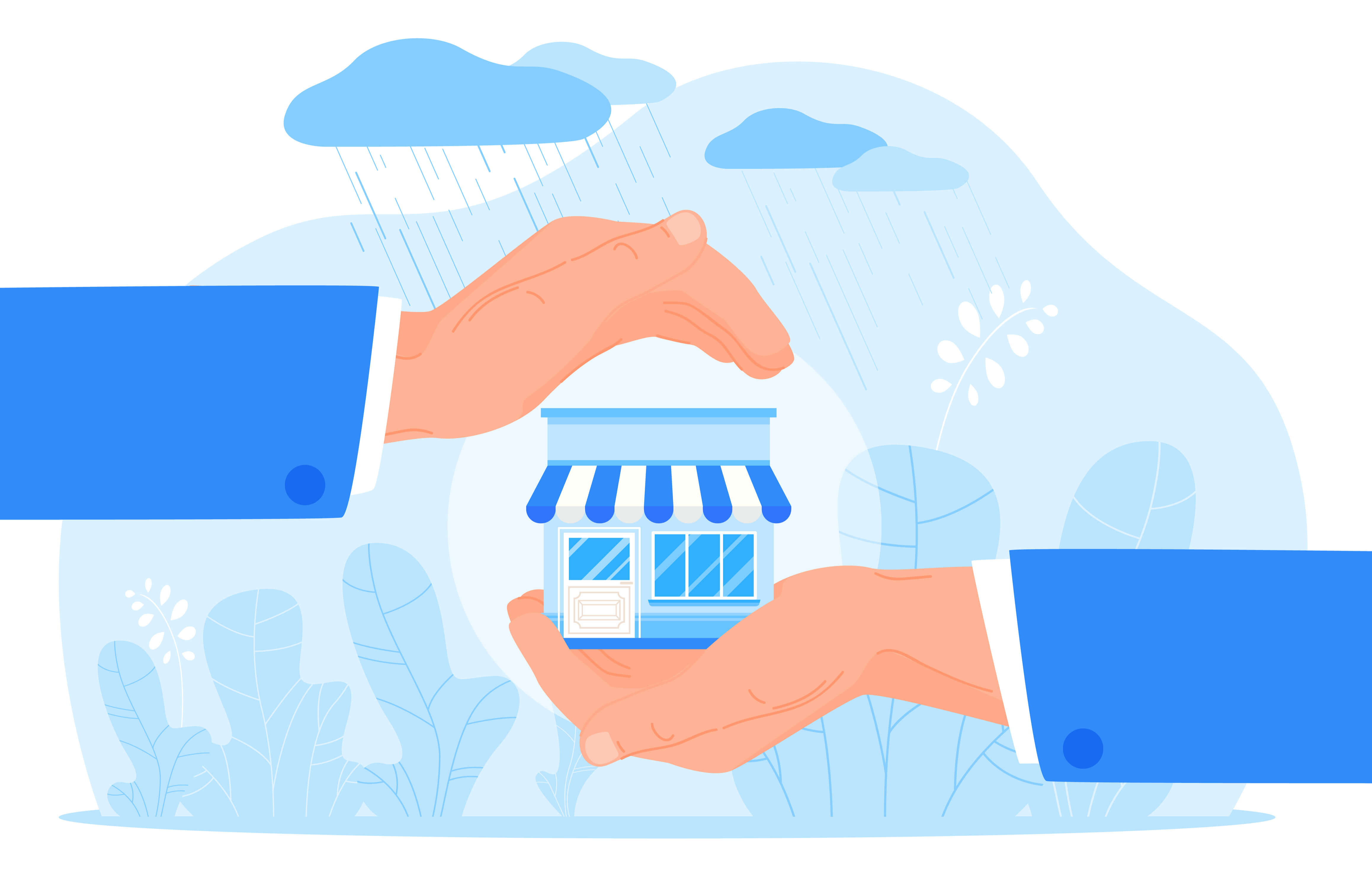
Now that you have an idea of what social media marketing looks like, you might ask yourself how exactly it’s going to benefit your business? The great thing about social media is that it can support almost any marketing goal of yours: from increasing sales and brand awareness to improving customer loyalty and engagement. Think of these networks as clay in your hands that you can model to the needs of your business.
Social Media Marketing Benefits

The biggest advantage of marketing your products or services on social media is that you get instant visibility from a broader audience. Even if you have a very well-developed website or a solid email database, you could never reach as many customers as you can via social media marketing. And with brand visibility come more conversion opportunities such as generating leads, engaging your current customers, or even attracting new business partners.
Enhanced Reach & Website Traffic
The next best thing is that once users start noticing your brand, you get to engage them with informative and exciting content that will lead them to your website. In that sense, social media marketing serves as a medium for generating web traffic and increasing your sales.
Improved Costs Allocation
Furthermore, SMM is among the most cost-effective methods to advertise your brand – it’s free to register on both Facebook and Instagram, and paid advertising is quite inexpensive in contrast to other types of paid promotion.
Raised Customer Satisfaction
In terms of communication with customers, marketing on social media allows you to nurture existing customer relationships by improving customer service and providing them with more useful information on your products or services. And that’s not all – you get to expand your network by attracting new customers, Facebook and Instagram influencers for collaborations, sponsors, partners, and so on.
Refined Competitors Understanding

Have in mind that social networks are the perfect place to explore the competition which is key to outperforming them not just on social media, but in general. Learn what are their social media marketing tactics: how they respond to questions and negative comments, what type of content they produce and how often it’s shared, what their paid ads campaigns look like, and so on. The more you know, the better chance you have to upgrade and improve your social media marketing.
Boosted Brand Image
And finally, social platforms are your go-to resource for how your brand image is perceived online. Practice the so-called social listening – research posts, stories, and hashtags on both Facebook and Instagram to understand what customers are thinking of you.
Updated Knowledge of Current Trends
You can also research and learn what are the trends in your field. Are there problems you need to address or questions you can help answer? This would be very helpful in content creation and customer communications as you would be more prepared and informed.
Is Social Media Marketing Good for Your Business?

Social media marketing is universal to every business regardless of its size or the field in which it operates. You will find both major companies and small businesses promoting themselves on social media, like many artists, realtors, and nonprofits as well.
Small Businesses
If you are a small company that is still in its early stages or you just need a little push to grow bigger, then Facebook and Instagram are the perfect spots for your brand. You will get great exposure with a minimal budget which is crucial for any developing business. Don’t be surprised to see if not all then most of your competitors on social media – they simply know that’s the best way to scale their business.
Artists & Freelancers
Facebook and Instagram also give single artists, musicians, freelancers, and other performers a stage to showcase their talent while promoting it to their current and potential fans/clients. For painters or graphic designers, Instagram is the better option as this network is built for more visual content. On the contrary, Facebook is perfect for content writers who are trying to reach a more reading audience.
Realtors could also benefit from social media marketing: they can adjust their Facebook ads to specific demographics and thus target interested buyers in certain areas. Real estate professionals could also use Instagram for sharing more luxurious properties and for updating their listings.
Non-Profit Organizations & Charities
Social media platforms like Facebook and Instagram offer some amazing opportunities for non-profit organizations as well. They can bring awareness to their cause or mission, build trust in the community, and even find funds via tools like Facebook fundraising.
Marketing on Instagram VS Facebook
Now that you have a better understanding of what social media marketing looks like, it’s time to turn your attention to how it happens on both Facebook and Instagram while examining each platform’s pros and cons.
Facebook Marketing

In the last years’ Facebook has transformed from a place to share and socialize with friends to one of the biggest online marketplaces that businesses use to promote their products and services.
Besides being able to reach almost 3 billion people on Facebook, businesses can either target their ads so that they reach as many potential customers as possible or count on organic reach if their budget doesn’t allow them to invest much in paid advertising.
Furthermore, this platform is great for experimenting with different types of content: from written to visual so that the audience is constantly engaged, informed, and entertained. The same applies to the variety of ads (i.e. stories, carousel, etc.) that businesses can create to attract new customers.
Reaching Your Facebook Audience Organically
Due to the large number of users on Facebook, reaching your target audience organically is a tough task. Still, it’s possible to get the most out of it if you follow the tips and tricks we are about to give you.
Videos
Video content is probably the best way to reach your audience as it engages the viewer like no other content. Even if your marketing budget is limited, you could still produce short videos about new products or new blog posts on your website. You can try conducting short interviews with your colleagues or employees to let your audience know you better.
Stories
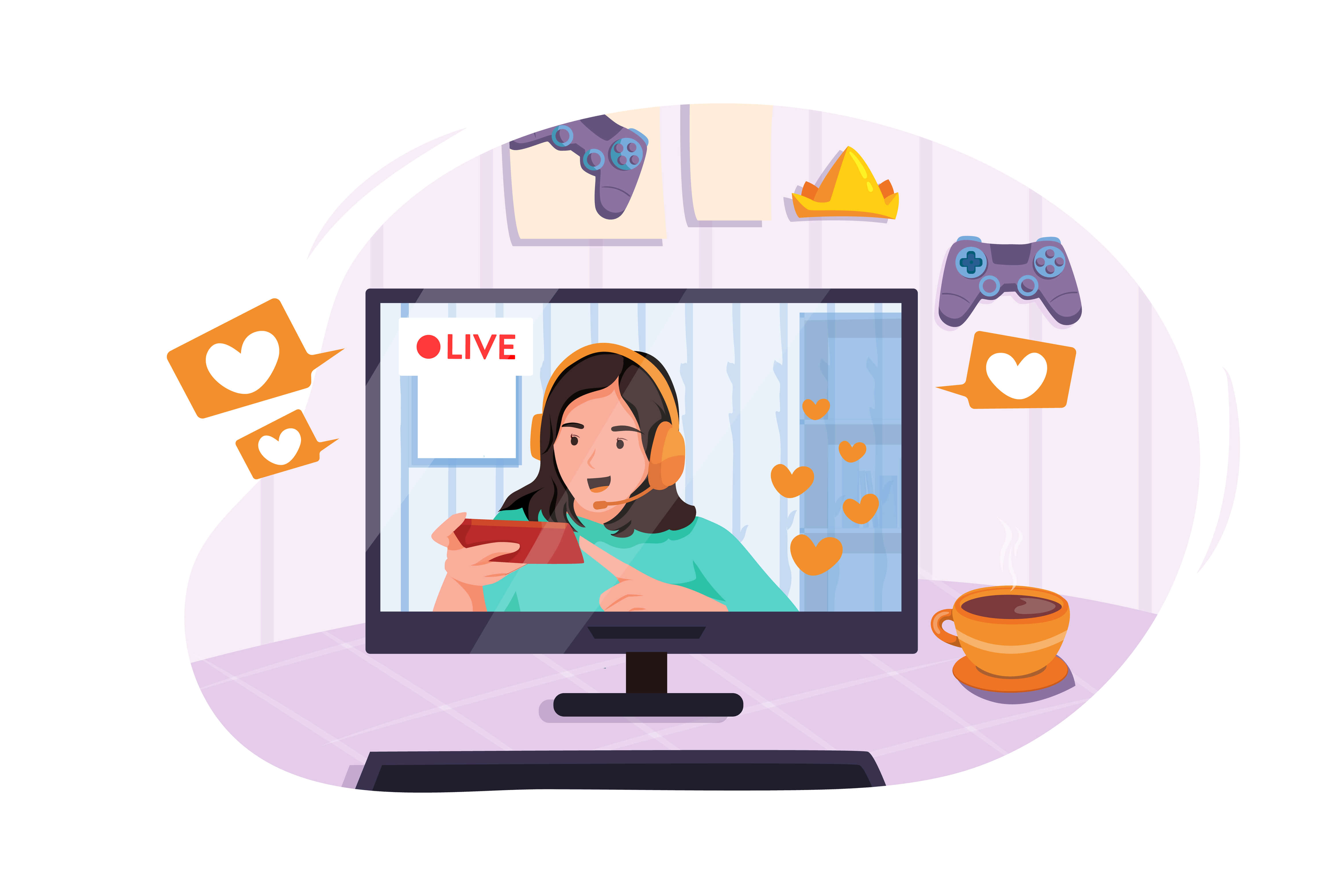
Stories and live videos should be an integral part of your organic reach as they let you interact with your audience by sharing interesting information or answering their questions. Furthermore, they are an inexpensive way to engage your followers as you don’t have to pay for editing, actors, and so on.
Private Groups
Another thing to try is creating a Facebook group related to your business or some of your products. As group posts seem to appear most often on the news feed, you will have better chances of being noticed. Just remember: the content you share should be informative and useful, not just promotional as people would leave the group.
The same applies to the content you share on your Facebook business page – try to make it sound as human as possible. Even though the goal is to promote your business, your followers would lose interest in you if you don’t offer any additional value to their feed.
The more engaging your content is, the more likely it is to reach your potential customers. So focus your efforts on crafting questionnaires, fun giveaways, or anything that would make your followers react by liking, sharing, commenting, and so on.
Reaching Your Facebook Audience Through Paid Advertising
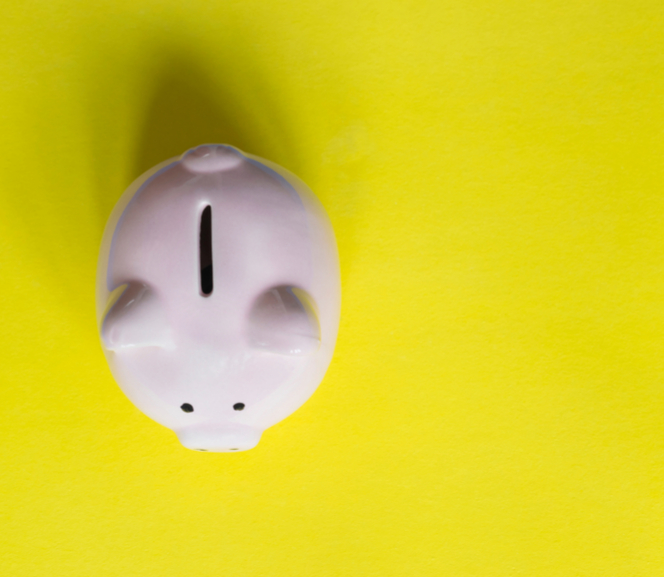
No matter how successful your organic reach strategy is, sooner or later you will realize that you need paid advertising to really see results in your social media marketing plan. As already mentioned Facebook offers a great variety of advertising, yet they all come down to this structure: different ads are grouped in different ad sets which then create different ad campaigns.
And that’s the best thing about paid advertising on Facebook: you can create visual ads for one of your target audiences and then another type of ads for a separate audience. Or you can experiment with different ads for the same audience to understand what works best for them.
Image Ads
Let’s take a look at what kinds of paid advertisements you can create on Facebook, starting with the most common one – image ads. The rule is to provide your audience with both captivating imagery and copy so that they are motivated to take an action like click the link or engage in any other way you want them to.

Another form of image ads is carousels which give you enough flexibility to either be creative in promoting one product or showcasing several products/services with one ad, etc.
Using only Image ads is done by businesses who don’t have enough budget to invest in video ads which are the most effective ones on Facebook. You can play around with the length of the video depending on the goal: whether it’s to demonstrate how your product/service works or to explain the mechanism of your promotional campaign, etc.
Slideshow Ads
If you lack the experience or the budget for video ads, but still want to create something with a similar effect, then slideshow ads are perfect for you. Just add your preferred short videos or pictures, and some music to create catching the attention of your followers. And what is even better: they don’t require a fast internet connection to run which is always a plus.
Poll Ads
One very engaging type of advertisement is poll ads which only mobile Facebook users could see. It works with both image and video ads so you can add links to each option of your poll. It’s a great way to get to know your audience by asking them questions related to your business.
How to Set Your Social Media Ad Campaigns

No matter which type of ad you decide to go for, there are several basic rules you need to follow:
- Create and manage your ad campaigns via Facebook Ad Manager;
- Set clear, realistic, and attainable goals for your ads (i.e. brand awareness, engagement, lead generation, web traffic, and so on);
- Carefully target your audience according to their interests, age, gender, demographics, education, etc.
- Set your budget: daily (your ad will run continuously during the day) or lifetime budget (your ad would run for a selected period);
- Adjust your ads for desktop and mobile view so that all users could see them;
- Schedule your ads;
- Keep track of your performance metrics regularly such as engagement, clicks, and so on;
- Analyze your ad performance to optimize your ads when needed;
Since we’ve covered how marketing on Facebook works, let’s examine how it happens on the other major social media platform – Instagram.
Instagram Marketing

With more than 1.2 billion users on the platform, Instagram is the second most visited social media after Facebook. As previously mentioned this social network is orientated towards image and video content mainly which explains the vast majority of users on it.
Instagram Demographics
Moreover, the younger generation (18-29) is the predominant audience on Instagram which is key if you as a business are targeting that age gap.
Ant that’s not all: about 130 million users engage with shopping content on Instagram every month – they are either researching the products or buying them. In both cases, it’s good for you as your brand awareness increases with every clicked post.
How Does Instagram Affect Your Social Media Strategy?
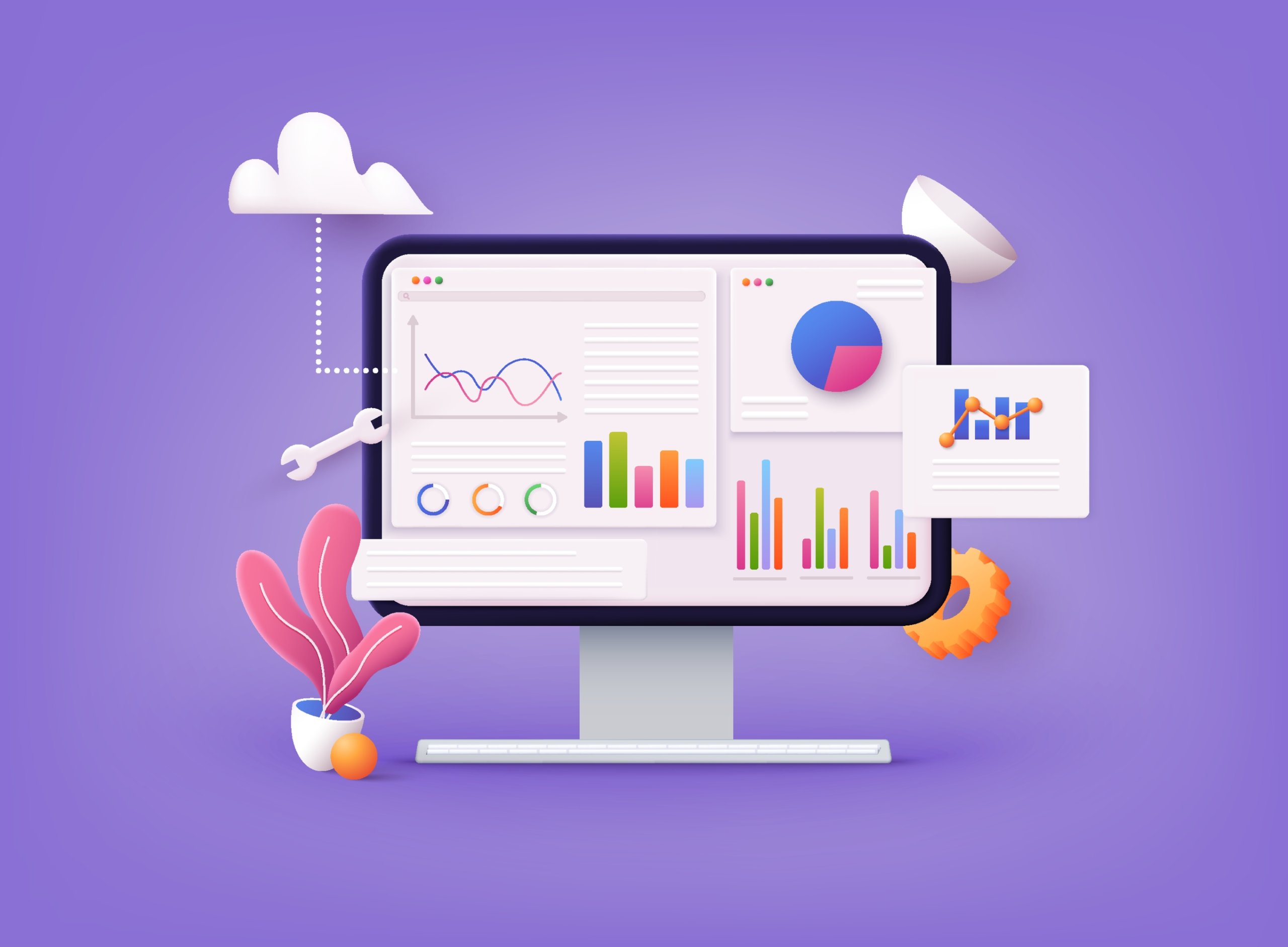
What else can you achieve with Instagram marketing? Apart from establishing your brand on the platform, you can both generate leads and improve your existing customer relationships. Also, you can increase your website traffic (and thus your sales) by navigating the users via CTA buttons on your posts and stories.
Finally, by forming collaborations with influencers on Instagram, you can boost your engagement, build trust and authority, and most of all: reach new and potential customers.
Just like with Facebook, reaching your audience could happen organically and through paid advertising. Let’s dive in and examine both ways with their pros and cons.
Organic Reach
Organic marketing is not just a solution for small businesses or startups with limited budgets. By providing your followers with useful and engaging content you are gradually building credibility and long-lasting relationships with them – which are both important for moving them down the sales funnel.
How to Achieve the Best Organic Reach on Instagram?
To get the most out of organic marketing, you should invest your time and efforts into crafting the following types of content: informative, entertaining, and engaging. Having that mixture on your Instagram account means that every potential customer, no matter the stage of their buyer’s journey, will always find something interesting or useful on your profile.
Posts, Stories, Reels
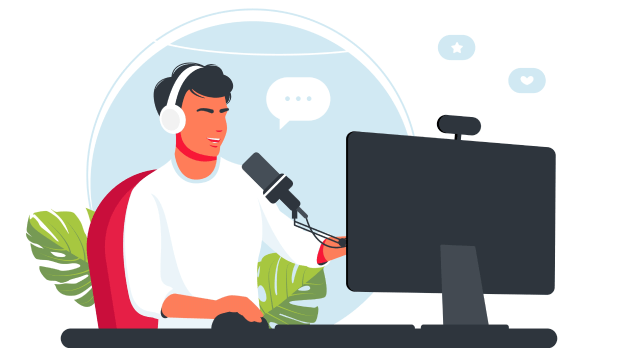
And thanks to Instagram’s variety of content forms: posts, videos, Reels, stories, IGTV, and IG Live, you have all this freedom and flexibility to present your brand in the best possible light without breaking the bank.
Use all these content formats to communicate with your followers while introducing them to your products/services. For example, you could film a Live video for FAQ about your brand as this will make you seem open and transparent or present a new product/service via fun Reels to entertain your audience.
Giveaways
If you need more ideas to engage your audience organically, then giveaways are perfect for that goal. There are different types of competitions on Instagram, yet we suggest you choose the one where the prize is either your product or your service. By doing so, you will promote your brand without paying any additional cost than the one already spent for producing the product or offering the service.
What is most important about organic marketing on Instagram is how you make conversions. There are several ways to choose from: link in bio, link in stories (previously known as the “swipe up” button), shopping tags on your posts, and via your direct messages. Whatever you decide to go for, make sure to be consistent as you want your followers to always have the option to purchase from your brand.
Paid Advertising

With almost 1 billion active users on the platform, being noticed is a real struggle, especially for developing businesses. That’s why you need Instagram advertising: it’s how you get more exposure, reach a larger audience and target your customers better.
Sponsored Content & Action-Driven CTA
The best advice about paid advertising on Instagram is to make it look as organic as possible. Instagram ads are already labeled as sponsored content, so you don’t want to make them even more salesy as this will push your potential buyers away. Your goal is to make the ads captivating and the CTA button – simple and visible.
To be able to advertise your brand on Instagram, you need to have a business account on the platform. Furthermore, by switching to a business profile, you get access to analytics so that you can evaluate your performance, and tag products on your posts to let your customers shop directly.
In-Feed Ads
Let’s examine the different types of ads you can experiment with starting with image ads. The ones that appear on the user’s feed are the most common format. They usually support almost all marketing goals: from increasing web traffic and brand awareness to making conversions and even app installs. Also, you can add whatever CTA button you like such as Book/Call Now, Contact Us, Learn More, etc.
The image ads that show up on stories are almost the same, yet they have a limited impact on your marketing objectives and fewer options for CTA buttons. Still, they are just as effective as these popping on the feed.
Video Ads
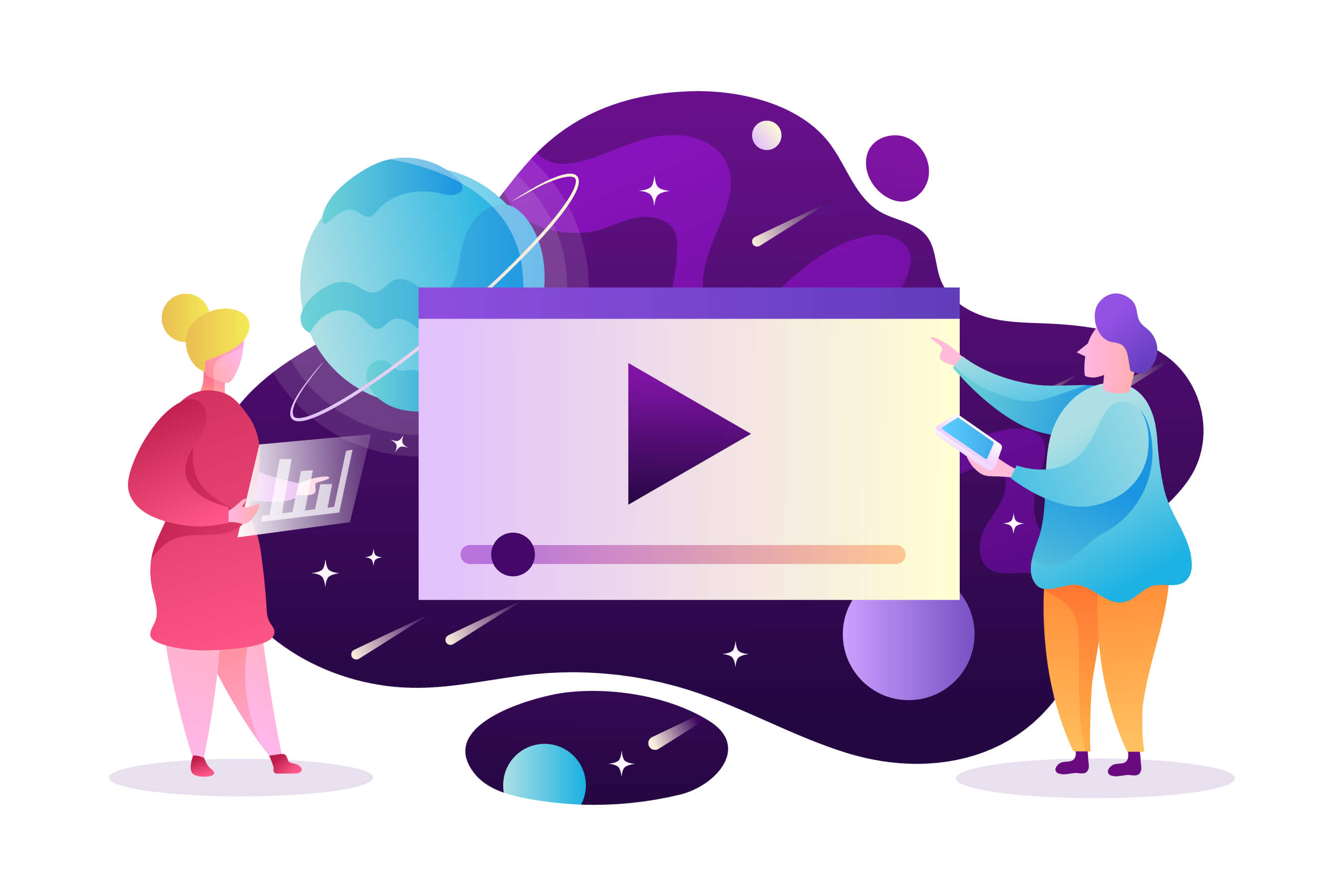
As we already discussed, Instagram is a visual social media so it’s no surprise that video ads are the jewel of paid advertising’s crown. By incorporating this type of advertising in your marketing strategy, you will get better exposure as video content is the most captivating form of content out there.
Once again, video ads can run on both the feed and the stories of your followers. Bear in mind that producing a video requires more time, effort, and investment in comparison to image ads, so you should include that in your overall marketing strategy.
Carousel Ads
If you want to showcase more of your products/services in a single ad, then carousel ads are the way to go. You can add up to 10 images or short videos to capture the audience’s attention for a longer period. And again, you can add various CTA buttons and achieve the most common marketing goals: increase your reach, website traffic, lead generation, etc.
Reels & Explore Tab Ads
There are other formats to choose from Explore Tab ads, Reels ads, and Shopping ads. Don’t get overwhelmed with the variety of ads, as you can experiment with all of them until you find the one (or the mix of them) that works best for your brand.
And finally, just like with Facebook, there are some basic principles to follow to get the most out of your paid advertising on Instagram: you need to set your goals, metrics, and budget; carefully target your audience; choose the right ad format(s); monitor, manage, and adjust your ads based on their performance.
Tip: Hundreds of growing businesses use Socialfix to leverage successful social media marketing strategies and showcase their products and services. Try us for a free consultation
Differences between FB marketing and IG marketing: Which is the most effective social media marketing platform?

After the profound examination of both Facebook and Instagram marketing, the next step is to summarize the main differences between them so that you can make an informed decision on which one is the better option for you.
To make it more clear, we’ve put a table with the things to take into account when choosing one social media over the other.
| Criteria | ||
| Number of users | 2.9 billion | 1 billion |
| Age of users | 25-34y (32%) | 18-29y (67%) |
| Avg. time spent daily | 28 minutes | 38 minutes |
| Main purpose (why people use it) | Personal interactions;
Informational; |
Observation and discovery;
Capturing moments; |
| Type of content (what performs best) | Text | Images/Video |
| Best for (what marketing goals) | Brand visibility;
Increase engagement and sales; Lead generation; |
Brand awareness:
Increase sales and website traffic; Influencer marketing; |
| Engagement rate | 0.09% per post | 1.60% per post |
| Conversion rate | 1.08% per post | 1.85% per post |
Facebook – A Place for Introductions
In addition to the table above, we have some more tips to guide you in your decision. The very first depends on your business’s current state – for new and developing brands, Facebook is a great place to explore your buyer persona, and thanks to the many options available, you can test different marketing strategies to find the best one.
Moreover, as text content performs better on Facebook, you could use the platform to introduce the audience to your business. Provide them with useful information about your products/services instead of bombarding them with images and videos, which won’t be as effective as if you share them on Instagram.
Instagram – A Place for Engagement
As for Instagram – it encourages the users to engage and interact with your content, so posting useful insights about your products/services would be very effective. You are more likely to build a loyal community on Instagram than on Facebook, so focus on developing relationships with your followers.
Evidence for the above-mentioned is the fact that nearly 90% of Instagram users follow at least one business on the platform. This means that you have the perfect opportunity to both nurture your current clients and attract new ones to your business.
Best Practices in 2022: Facebook and Instagram

Although written content performs best on Facebook, as of the end of 2021 the platform launched Reels (just like the Instagram ones) and they seem to be accepted very well by the users.
Videos
One of the practices you can adopt this year is to incorporate Facebook Reels into your marketing strategy. As a new feature on the platform, those short videos (about 30 seconds) are still being developed, yet they are perfect for introducing your brand or the launch of a new product/service, increasing your followers, and so on.

User-Generated Content
The next best thing you can do for your business on Facebook is to incorporate UGC (user-generated content). By doing so you will build trust in your brand which is crucial for generating leads and sales.
Facebook Groups
We already mentioned that, but still: creating a Facebook group related to your brand is one of the trending practices in 2022, that promises to drive more engagement. By building a community around your business, you are achieving the following: beating your competition by offering additional value and content; building trust and credibility; increasing your chances of purchases by the group members.
Another hot trend to adopt is improving your customer service with the help of chatbots. Not only will you facilitate the client-brand communication, but also save time on answering FAQs about your business – time that you can invest in bettering your marketing strategy.
And lastly, Facebook is the ideal spot to do an A/B test on your ads, organic content, and campaigns. Don’t be afraid to experiment with different formats and different target audiences to find the best working model for your business.
The very first practice we advise you to take on is related to the content you share. Being authentic and raw is what Instagram users are looking for in 2022. Your followers want to relate to your brand concept and mission and to do so, they need to find relevant and human content.
That’s why it’s a good idea to invest your efforts into crafting content that resonates with their needs – showcase your products/services as solutions to what the consumers need. This is how you will build trust in them so that it’s easier for them to make a buying decision.

Q&A Sessions & Polls
In terms of content, another great practice is engaging your audience via Q&A sessions, IG polls, and any other type of content that will make them interact with your brand. You can use this in your advantage in several ways: getting to know your audience; receiving their feedback on your products/services; gathering ideas for improving your business in various ways, etc.
Influencer Campaigns
Influencer marketing is and will continue to be a hot trend not just in 2022, but in the future as well. Forming collaborations with influencers is a clever way to reach more potential customers, develop your business network, and increase your brand awareness.
Instagram Tags
Our next suggestion is to incorporate tags in your posts, especially geo-tags and location tags. This practice is useful for businesses that want to target specific areas and engage their local followers. If you are one of them, then don’t hesitate to jump on that trend so that you reach your marketing objectives in less time.
Instagram Reels
Not to repeat ourselves a hundred times, but investing your time, efforts, and money into video content is crucial for the success of your marketing strategy. The more creative and engaging you make it, the more you can achieve. Instagram is the place to experiment with various forms of video content and the hottest now are Live videos, Stories, and Reels.
Both Worlds

In conclusion, to answer the question of which social media is the better marketing platform, we say both. Why have to choose the one over the other, if you can use them together to create a solid online presence of your business on social media in general?
We already listed the pros and cons of Facebook and Instagram, so by now you probably have figured out which one fits your marketing strategy better. Still, we suggest being present on both platforms, and what is most important – is to cross-promote your content on each social media.
By doing so, you can stimulate your Facebook audience to follow you on Instagram and vice versa and thus engage more with what you share with them.
Final Words
Whatever you decide to go for – Facebook or Instagram, or a mixture of both, we have 2 final tips for you to make the most of your decision. First, having a diverse and consistent content plan is a must on your list of priorities. And second, focus on being regular in tracking and analyzing your performance no matter what platform you choose.
Use this comprehensive guide to Facebook and Instagram marketing to meet your goals, build strong relationships with your audience, and create a solid brand image online.
If you’ve missed the first part of our complete social media marketing guide you can read it here.






